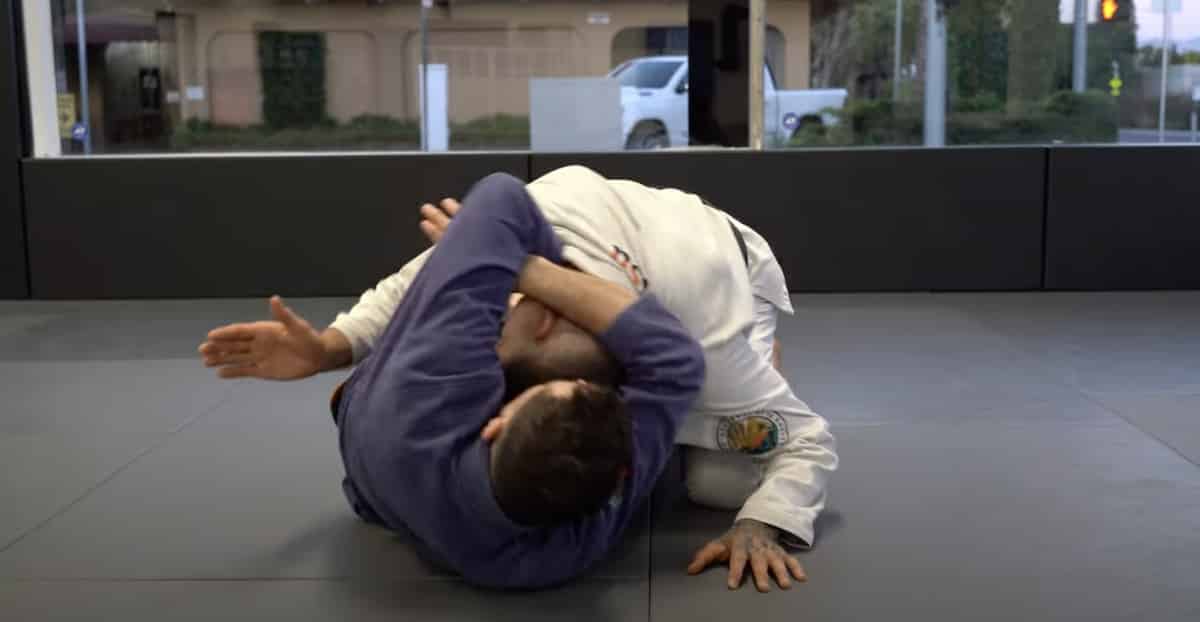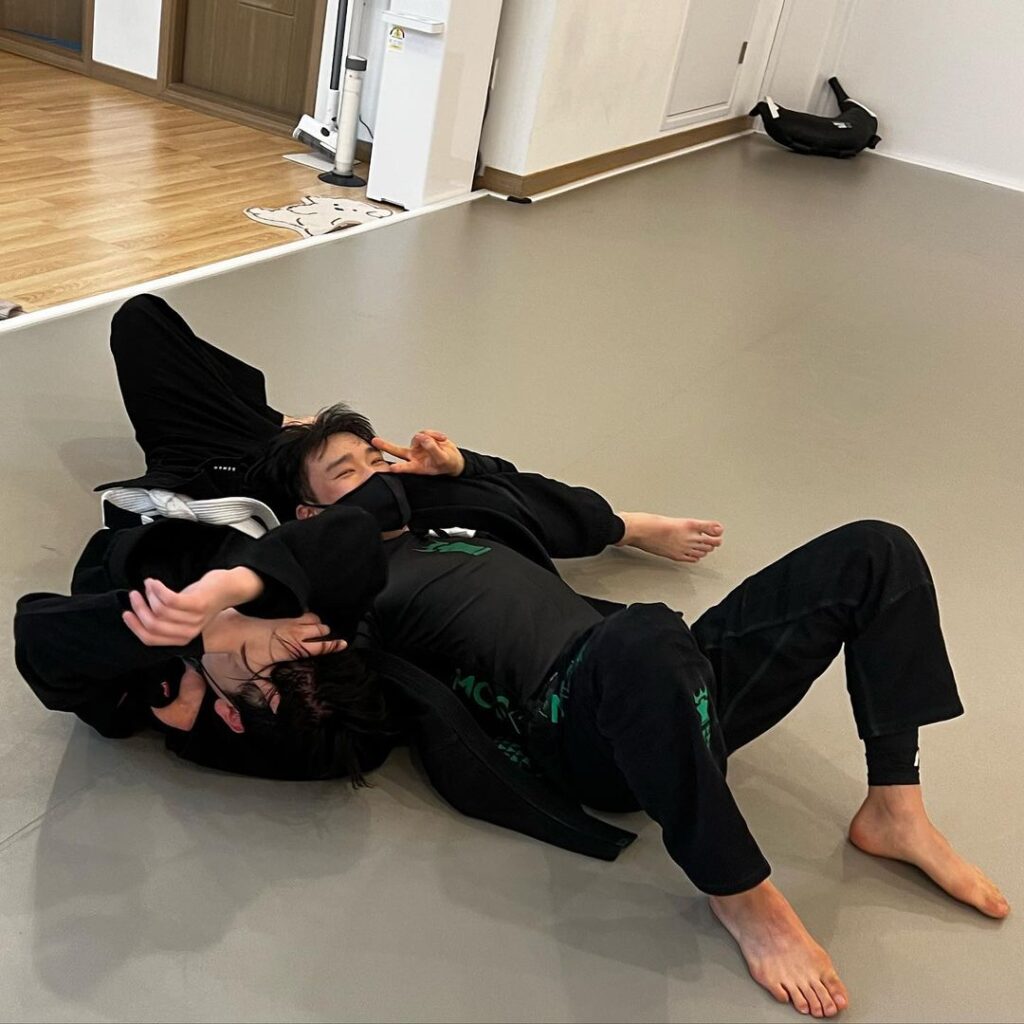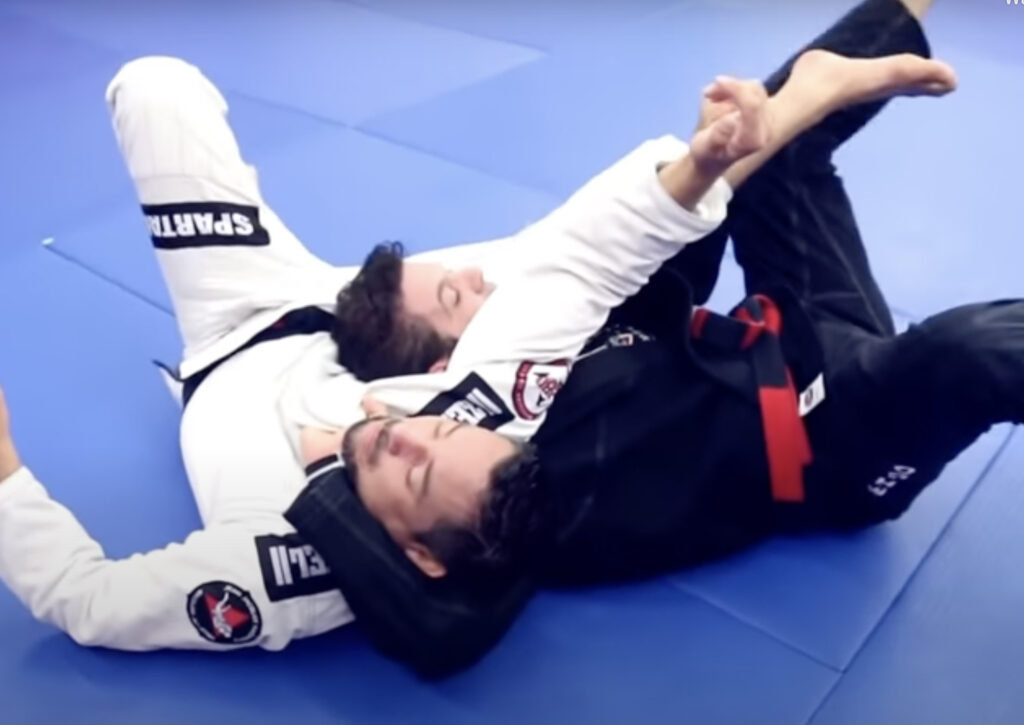Loop Choke – BJJ Submission

One of the most brutal and sneaky Gi chokes in all of Jiu Jitsu is the loop choke. Most of the time, you have no idea it’s coming until you’re forced to tap or are waking up from a nap.
With the constant evolution of Jiu Jitsu, there have been numerous variations of the loop choke developed. It can be put on just about anywhere and at any time.
For those looking to expand their Jiu Jitsu game, here is everything about the loop choke. We’ll detail everything from how it works and detail various ways to land the choke. Also give you important tips for locking this submission in.

Who invented the loop choke?
There is no one person that is credited with coming up with the loop choke. In Jiu Jitsu, Gi chokes were developed early on in the martial art and gradually innovated as time went on.
Where loop choke techniques really started to take off was when the sport Jiu-Jitsu started to become popular. BJJ athletes started coming up with different variations of the choke for competitions.
Today, the loop choke can be hit from numerous guards and positions. Making it one of the most diverse and powerful submissions in all of Jiu-Jitsu.
How does the loop choke work?
The loop choke is the equivalent of getting a rope put around your neck pulled shut. In the traditional loop choke it all starts with a shallow grip on your opponent’s collar.
This grip must be semi-loose, because when you pull your arm up it tightens the grip. Then your free hand slides between your grip hand and your opponent’s neck.
A classic blood choke that will put your opponent to sleep in a few seconds if they do not submit.
Loop choke from closed guard
One of the best loop choke techniques comes from one of the original positions it was created in. From the closed guard.
Start from the closed guard and get your collar grip. Make sure that this grip is somewhat shallow and loose. Otherwise, you won’t get the choke.
After you get your grip, you must sit up and pull your opponent’s head down to break their posture. You cannot get the choke if your opponent’s posture isn’t broken.
Then as soon as you pull their head down, you must flare your elbow up. This makes space for your top hand to come through and close off space.
When you flare your elbow, your free hand slides in to close off the space. Now with your hands in place, fall back at a slight angle on your side to close your guard.
Once your guard is close and the choke is in, your opponent will be forced to tap.
Thumb down loop choke from half guard
There’s an effective loop choke from knee shield half guard that is easy and done with a thumb-down grip. It opens up when your opponent’s head is tight to your body.
Start by framing to block your opponent from cross-facing and grab a thumb down grip on their collar. The reason for a thumb-down grip here is that it creates a better frame than the normal loop choke grip.
Also because of the positioning of your opponent’s head, the normal grip won’t grip any space. So when you flare your elbow here it gives you more space and is easier to pass your hand through.
It comes on quick and tight.
Loop choke against defensive opponent
When you’re in guard going against a really defensive opponent, they sometimes lead with their head. This puts them right in place for a loop choke.
From this position, you can grab a cross collar grip and sit up with your other hand based out. With your collar grip, you’re going to snap your opponent’s head down and turn your elbow up.
Once your elbow is up, you can put your free hand through the hole, fall back. Then before you go for the finish to put you leg across your opponent’s back to keep them from rolling out.
Rolling loop choke

Whenever you gain head control over your opponent from a snap down, there is a loop choke opportunity open. From on top with head control, you’re going to bring your hand under your opponent’s chin and grab their collar.
From there, rotate your body to the side and place your head between your opponent’s knee and elbow. Then grab their leg, lift your outside leg up and roll into your opponent.
When you roll it, take your opponent to their back with the choke locked in. Also if you would like to stop them from defending, you can hook their leg to keep them from turning away.
Loop choke counter to double leg
When an opponent is going for a double leg takedown, their neck is wide open for chokes. One of which is a tight loop choke variation.
Before setting up your choke, you have to defend the takedown attempt by sprawling. After you sprawl, walk your knee over your opponent’s shoulder and take a cross collar grip.
When you go over their shoulder this puts you at an angle on your opponent. The finishing sequence is the exact same as doing a Peruvian necktie in No-Gi.
Step your leg up and put it on the back of your opponent’s neck next to your choke arm. Then fall back at an angle as you put your leg over their back and pull the collar to set in the choke. (Subtitles on for this video)
Side control loop choke
A loop choke is also possible from when you’re holding side control on your opponent. It starts by holding side control with your inside arm on their hip and outside arm around their head.
When you hold side control like this without under hooking, your opponent will instinctively turn into you. As they do that it opens them up for a loop choke set up.
Your outside arm comes back around your opponent’ neck and you grab a 4 finger cross collar grip. Once you get this grip, you’re going to walk your body around their head to the other side.
To start the finishing sequence, go palm down on the mat with your free hand. Then walk your hand behind your opponent’s head until they tap.
The most powerful loop choke
You have probably seen a highlight of blackbelt Alexandre Vieira’s loop choke, where he picks his opponent on his back. Putting them to sleep and then putting them back down on the mat.
The setup for this choke is almost exactly the same as the rolling loop choke. Just instead of rolling through, you stand up with your opponent on your back.
It starts the normal way by getting your cross-collar grip and pulling your opponent’s head down. When you do this, you’re giving up this space for him to go to side control, but it’s a trap.
As they pass to side control, they are basically giving you the choke. While they’re trying to finish the pass, take your free hand and grab your opponent’s far leg.
You use the grip on this leg to pull yourself right under your opponent. The choke can be finished from here, but if they defend you can do a technical stand up.
Finishing the opponent from on your back standing.
Tips for doing the loop choke
This can be a powerful submission but is often done wrong. Here are important tips for pulling off the loop choke.
- Shallow Collar Grip: Do not get a deep grip on your opponent’s collar. It must be a bit shallow in order to pull the slack and get tension on the choke.
- Sit Up: A big mistake people make when they miss the loop choke from guard is they don’t sit up. In order for your top hand to clear your opponent’s head, you must make space by sitting up.
- Break Opponent’s Posture: You have to break your opponent’s posture by sitting up and pulling their head down.
- Elbow Up: You have to flare the elbow of your choke arm up in order for your other hand to pass through.
- Top Hand Positioning: Your top hand that closes off space must go between your arm and the opponent’s neck. The choke will not work without doing this movement.
- Pull The Collar: Once you loop your top hand in, you must pull the collar up to set in the choke.
- Leg Across Back: When you do a loop choke from a guard, be sure to put a leg(s) across your opponent’s back. This will keep them from attempting to roll out of the submission.






